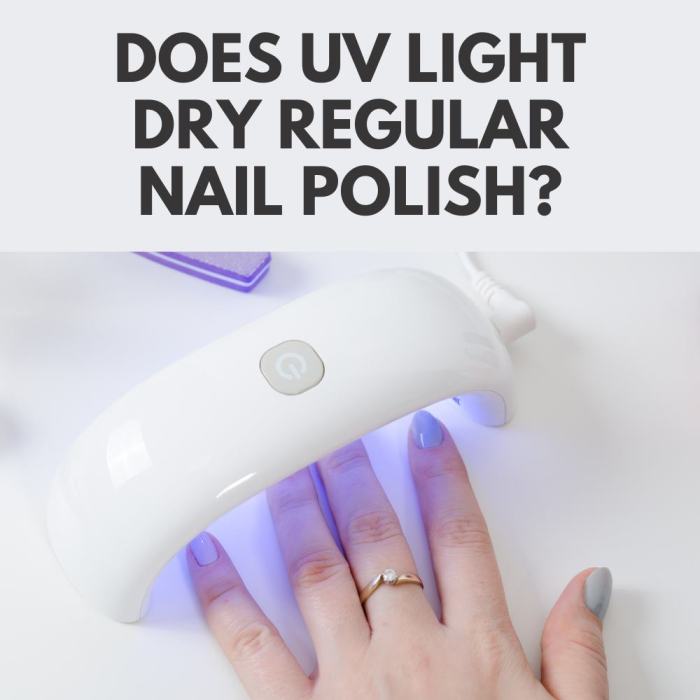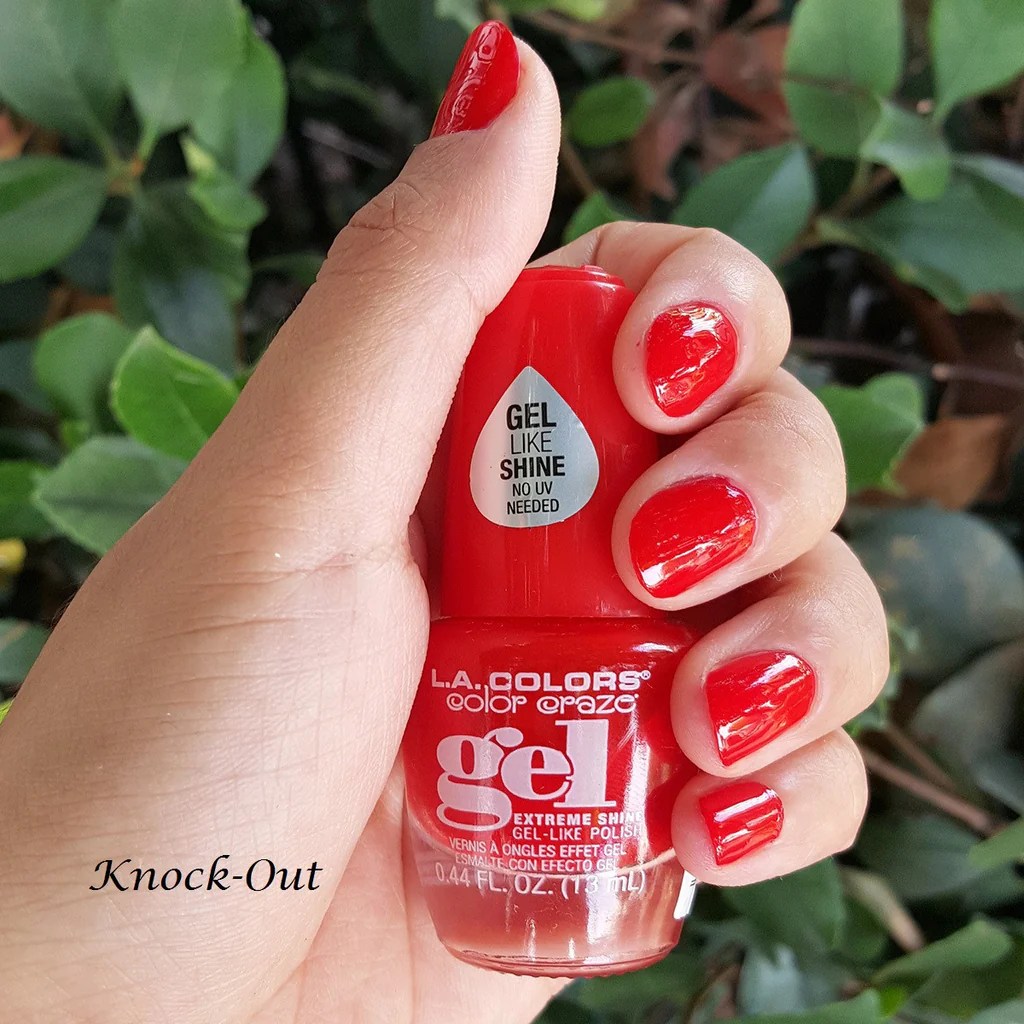How Long Does Regular Nail Polish Take to Dry?
Factors Affecting Nail Polish Drying Time

Source: nailhow.com
How long does regular nail polish take to dry – Generally, regular nail polish needs around 15-20 minutes to dry to the touch, but achieving a completely chip-resistant finish takes significantly longer. Interestingly, the drying time doesn’t necessarily correlate with price; even the costliest nail polish might still require a similar drying period. Ultimately, patience is key for a perfect manicure, regardless of the polish’s price tag.
Several factors influence how quickly regular nail polish dries. Understanding these factors can help you achieve a perfectly smooth, chip-resistant manicure in less time.
Temperature’s Effect on Drying Time
Higher temperatures accelerate the evaporation of the solvents in nail polish, leading to faster drying. Conversely, colder temperatures slow down the evaporation process, resulting in longer drying times. A warm room is ideal for quicker drying.
Humidity’s Impact on Drying Speed
High humidity hinders the evaporation process because the air is already saturated with moisture. This slows down the drying time significantly. Low humidity, on the other hand, allows for faster evaporation and quicker drying.
Drying Time Comparison Across Brands, How long does regular nail polish take to dry
Different nail polish brands utilize varying formulas and solvents, resulting in different drying times. Some brands are known for their quick-drying formulas, while others may take considerably longer. This variation is due to the specific chemical composition of each brand’s polish.
Thickness of Nail Polish Application
Applying thick coats of nail polish dramatically increases drying time. Thinner, more even coats allow for faster evaporation and a smoother finish. Multiple thin coats are always preferred over one thick coat.
Role of Base and Top Coats
Base coats create a smooth surface for the color coat, improving adhesion and sometimes aiding in faster drying. Top coats not only add shine and protection but also often contain ingredients that help the manicure dry more quickly. Using both a base and top coat is recommended for optimal drying and longevity.
Drying Times Under Different Conditions
| Brand | Temperature (°C) | Humidity (%) | Drying Time (minutes) |
|---|---|---|---|
| Brand A (Example) | 25 | 50 | 15-20 |
| Brand B (Example) | 25 | 50 | 20-25 |
| Brand A (Example) | 15 | 70 | 30-35 |
| Brand B (Example) | 15 | 70 | 35-40 |
Drying Techniques and Methods: How Long Does Regular Nail Polish Take To Dry
Several methods can significantly reduce nail polish drying time. Implementing these techniques can help you achieve a perfect manicure more efficiently.
Methods for Speeding Up Drying
- Using a quick-drying top coat.
- Applying thin coats of polish.
- Using a fan to circulate air around the nails.
- Immersing nails in cold water (for a short time).
Effectiveness of Quick-Drying Top Coats
Quick-drying top coats contain specialized formulas that accelerate the drying process. These top coats often utilize different solvents or additives to achieve faster evaporation.
Step-by-Step Guide for Faster Drying
- Apply a thin base coat.
- Apply two thin coats of color polish, allowing each coat to dry slightly before applying the next.
- Apply a quick-drying top coat.
- Use a fan to gently circulate air around the nails.
Using a Fan to Accelerate Drying
A fan gently blowing on your nails can help to accelerate the evaporation of solvents, reducing drying time. Avoid placing the fan too close, as this can cause the polish to become smudged.
Advantages and Disadvantages of Fast-Drying Nail Polish
Fast-drying polishes offer convenience but might be slightly more prone to streaking or chipping if not applied correctly. Traditional polishes offer more time for even application but take longer to dry.
Common Mistakes That Prolong Drying Time

Source: makeup.com
- Applying thick coats of polish.
- Not allowing sufficient drying time between coats.
- Using old or thick polish.
- Ignoring environmental conditions (high humidity).
Types of Nail Polish and Drying Times
Different types of nail polish have varying drying times due to their unique formulations and ingredients. Understanding these differences can help you manage your manicure time effectively.
Drying Times of Different Nail Polish Types
- Crème polishes: Typically dry moderately quickly.
- Shimmer polishes: May take slightly longer to dry due to added particles.
- Glitter polishes: Often require the longest drying time due to the larger particles.
Characteristics Affecting Drying Speed
The concentration of solvents, the presence of additives like plasticizers, and the size and type of pigments all influence how quickly a nail polish dries. Higher solvent concentration generally leads to faster drying.
Brands Known for Fast-Drying Formulas
Several brands focus on developing quick-drying formulas. Researching brands known for fast-drying polishes can save you valuable time.
Chemical Composition Differences
The specific chemical composition of each nail polish formula dictates its drying time. The type and amount of solvents, resins, and pigments all play a crucial role.
Nail Polish Types and Typical Drying Times
- Crème: 10-15 minutes
- Shimmer: 15-20 minutes
- Glitter: 20-30 minutes or more
Troubleshooting and Problem Solving
Despite your best efforts, nail polish may sometimes take longer to dry than expected, or you may encounter other issues. Understanding common problems and their solutions can prevent frustration and achieve a flawless manicure.
Reasons for Slow Drying
- High humidity.
- Low temperature.
- Thick coats of polish.
- Old or thick polish.
Dealing with Smudged or Unevenly Dried Polish
If your nail polish smudges, gently remove the smudge with a cotton swab dipped in nail polish remover. For uneven drying, apply a thin top coat to even out the surface.
Preventing Chipping
Proper nail preparation, applying thin coats, and using a good quality base and top coat are key to preventing chipping. Avoid using your nails as tools to minimize stress on the polish.
Removing Sticky or Tacky Polish
If your nail polish remains sticky, try gently buffing the surface with a soft nail buffer. Alternatively, you can try applying a thin layer of top coat to seal the surface.
Importance of Proper Nail Preparation
Proper nail preparation, including cleaning and lightly buffing the nail surface, is crucial for optimal adhesion and faster drying. This ensures a smooth base for the polish to adhere to.
Flowchart for Troubleshooting Slow-Drying Nail Polish
(A visual flowchart would be included here, outlining steps to troubleshoot slow-drying nail polish. It would include decision points based on factors like temperature, humidity, and application technique, leading to solutions like applying thinner coats, using a fan, or waiting longer.)
Visual Representation of the Drying Process
The drying process of nail polish involves a visible transformation from a wet, glossy state to a completely dry, hardened finish. Observing these changes can help you understand when your manicure is ready.
Visual Stages of Nail Polish Drying
Initially, the wet nail polish appears glossy and highly reflective. As it begins to dry, the gloss reduces slightly, and the surface becomes less reflective. The texture changes from a liquid to a more solid, less tacky state. Finally, the polish becomes completely dry, with a smooth, hard surface and consistent shine (depending on the top coat).
Changes in Appearance During Drying

Source: shopify.com
The initial high gloss gradually diminishes as the solvents evaporate. The surface texture transitions from a wet, almost liquid-like state to a firm, smooth finish. The color may appear slightly less vibrant when wet and become more saturated as it dries.
Transition from Wet to Dry Finish
The transition from wet to dry is marked by a change in both appearance and texture. The initially glossy, wet surface gradually loses its shine and becomes less reflective. The surface feels tacky at first, then progressively less sticky until it’s completely dry and hard to the touch, with a smooth, even finish.
Top FAQs
What is the best way to remove sticky nail polish?
Gently buff the sticky residue with a fine-grit nail buffer. If that doesn’t work, try soaking a cotton ball in nail polish remover and gently wiping the affected area.
Can I speed up drying time by putting my nails in cold water?
While cold water might seem counterintuitive, it can actually help. The cold temperature helps to set the polish faster.
Why does my nail polish always chip so quickly?
This is often due to improper application (not enough base coat, too thick coats), or using old, thickened polish. Ensure proper nail preparation and use fresh polish.
Does the color of the nail polish affect drying time?
Darker colors generally take slightly longer to dry than lighter colors due to their higher pigment concentration.















